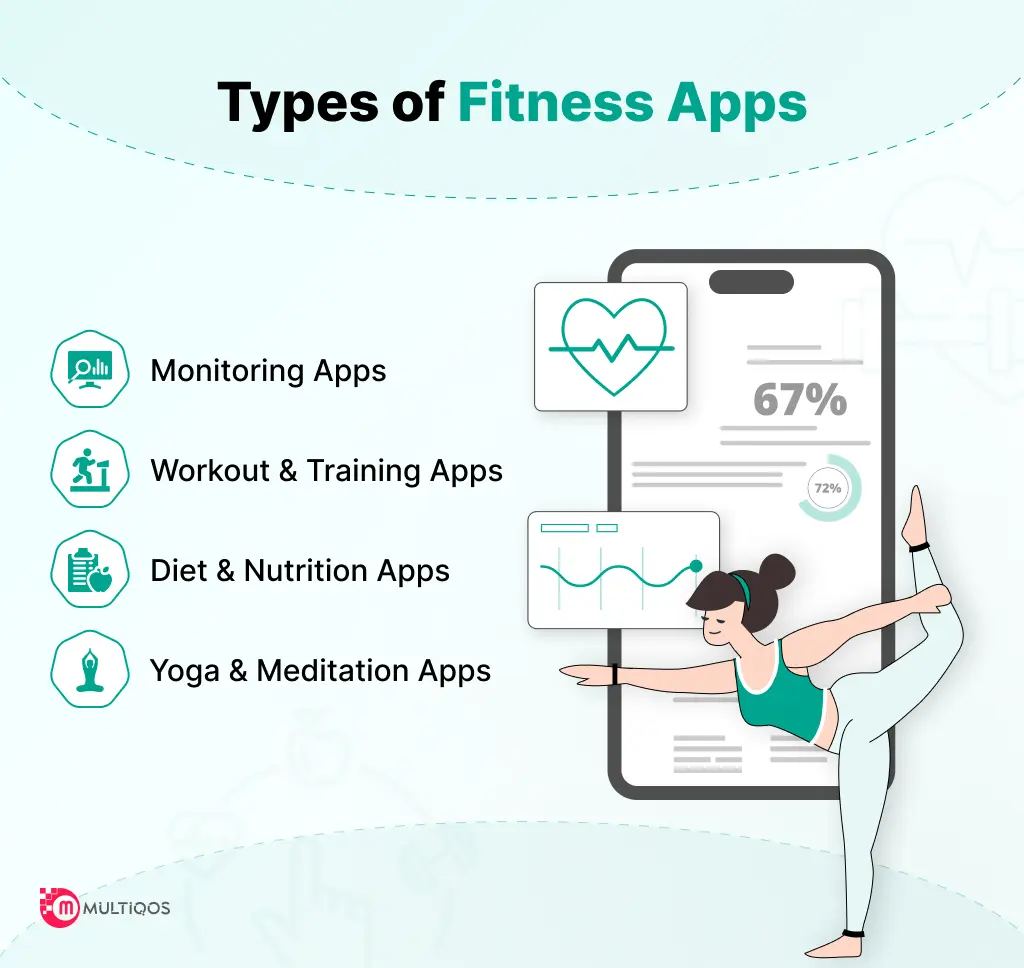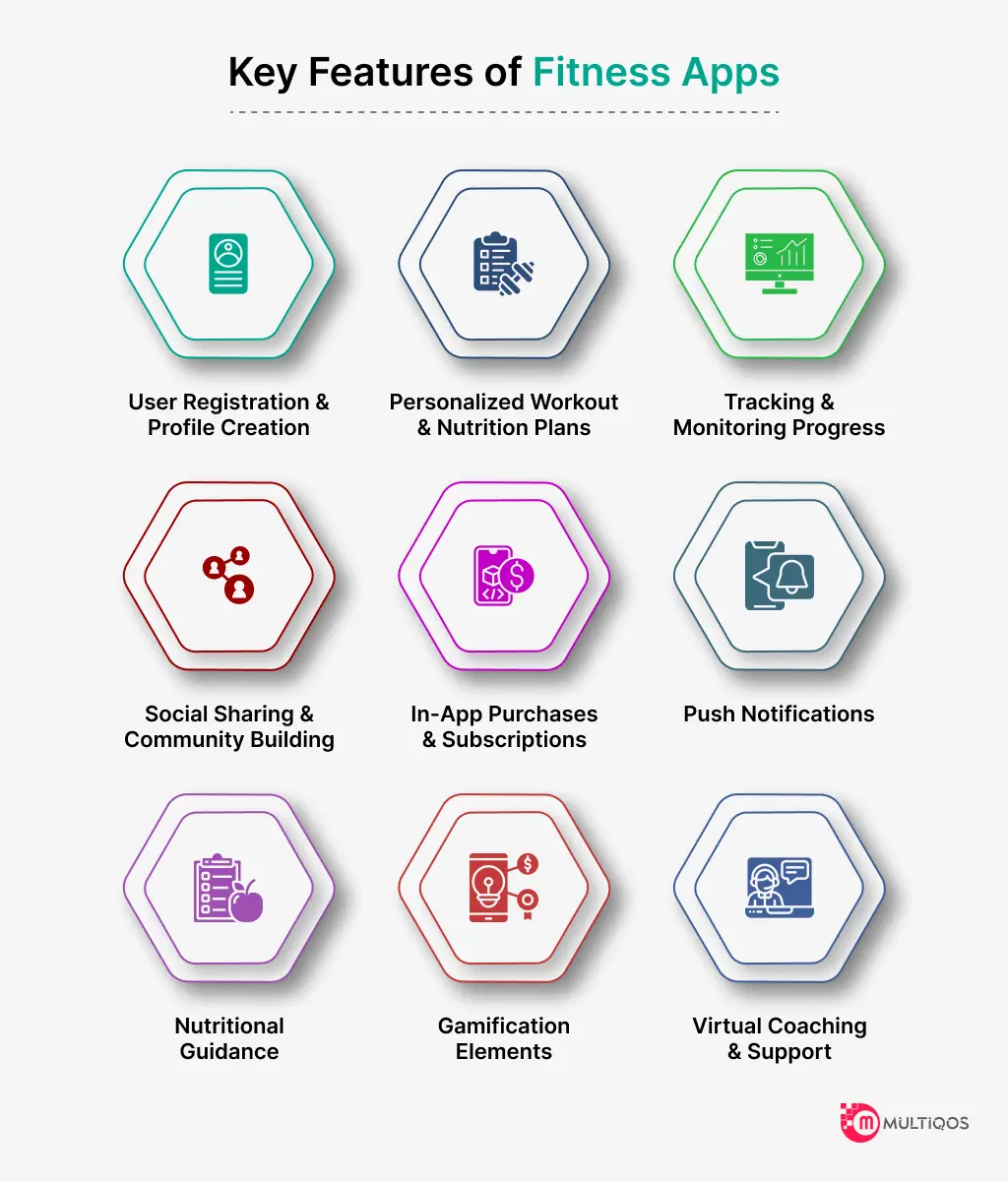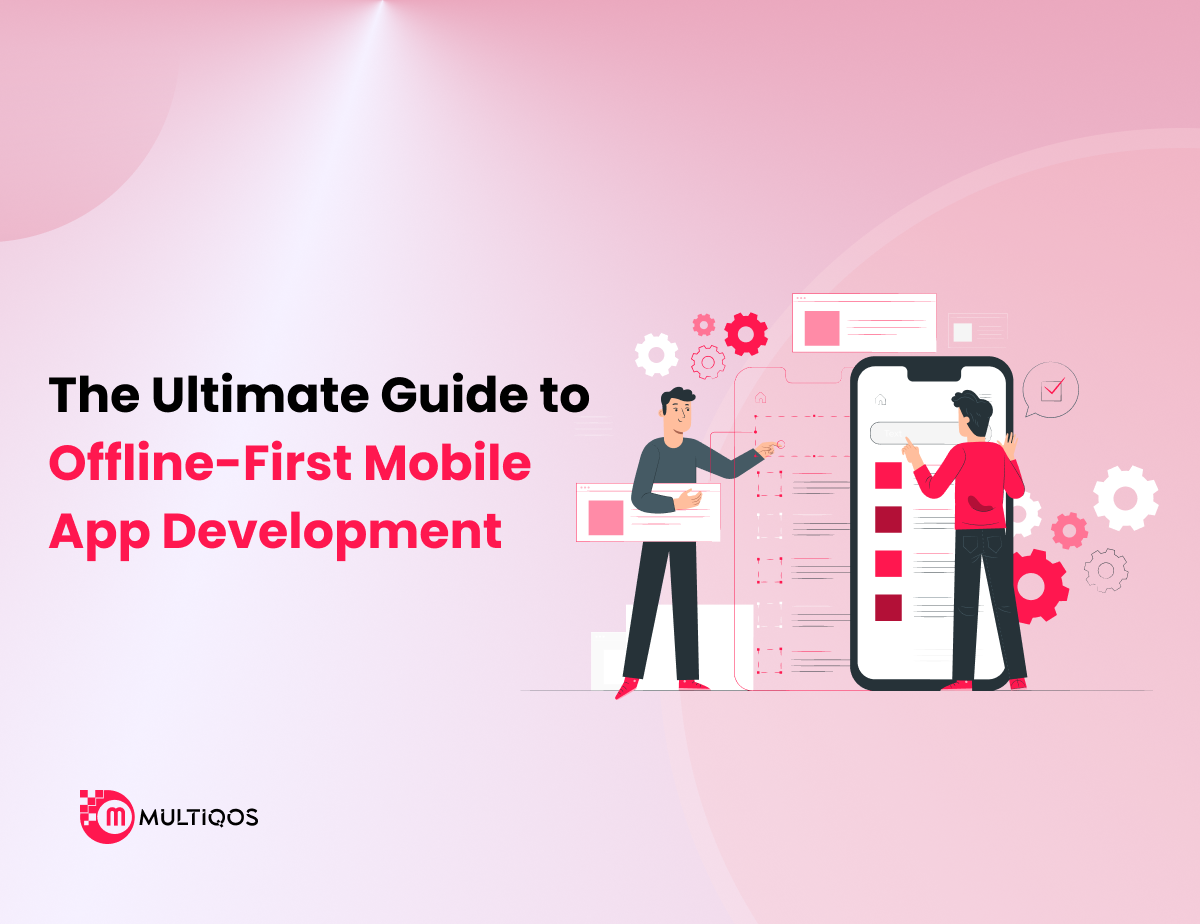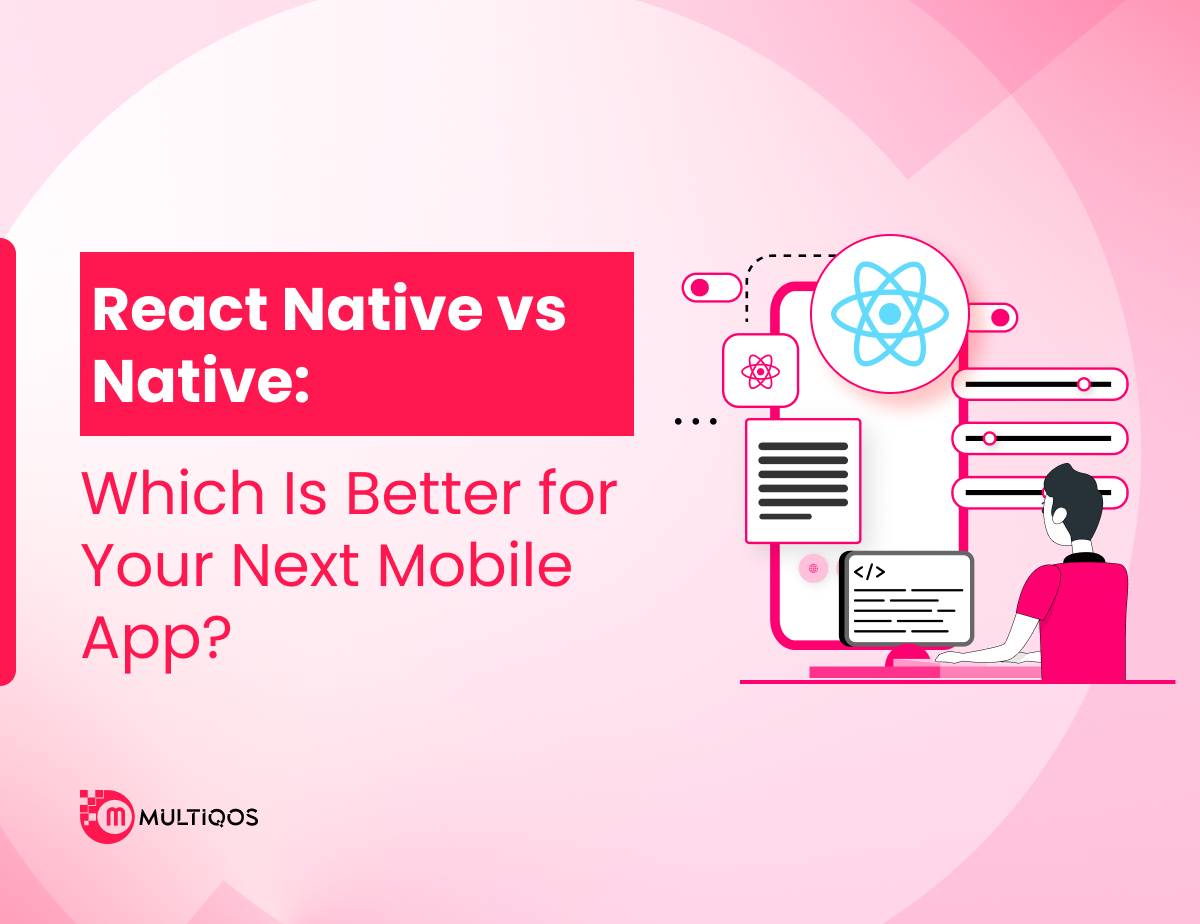Fitness App Development – Step-by-Step Process, Features, Costs & More
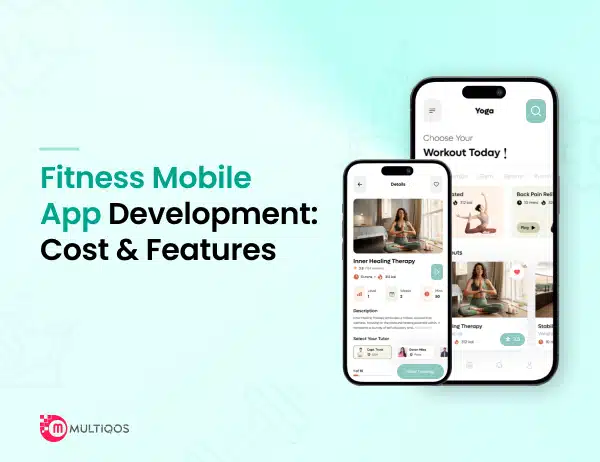
In modern times, with increasingly busy people’s lives, technology is becoming a fundamental element for reaching health and fitness targets. Fitness apps are must-have tools daily. They help to track progress, motivate users, and provide personalized guidance.
The growing popularity of home workout equipment is further accentuated as people now go for convenient ways to keep fit during the pandemic outbreak. These apps integrate BMI, BMR, hydration level, and nutritional advice tracking features. The market forecast is positive, and digital fitness apps are projected to grow to US$25.40 billion in 2028.
Fitness app development for entrepreneurs and enterprises offers many lucrative advantages, but it demands a clear vision of the development process, a must-have features list, cost estimation, and tech stacks. This guidebook is meant to lead stakeholders through this voyage, not only empowering them but also equipping them to reap from this growing market.
Types of Fitness Apps
Before diving into the specific aspects of creating fitness mobile apps, it is essential to understand the many categories that they can be classified into. Health and fitness apps usually involve the following areas: health tracking, workout plans, stress relief, dietary guidance, and nutrition management.
Fitness apps have exploded in popularity, and today there are many different categories catering to various interests and goals. Some of the most common types of fitness apps include:
-
Monitoring Apps
An application is the best choice if you want to have a record of your daily level and workouts. It uses phone sensors to count your steps, distance traveled, calories burned, or whatever. The most commonly used platforms, such as Strava, MapMyRun, and Nike+ Run Club enable you to track various activities including walking, running, bike ride, and workouts. Some, likewise, can work in conjunction with fitness trackers and smartwatches.
-
Workout and Training Apps
Be it someone who does bodyweight exercises, lifts weights, high-intensity interval training, or is a yoga fan, there is an app for each of the above. For example, there are apps such as Sworkit, Nike+ Training Club, and FitOn that have built-in video workouts with different levels for all types and skill levels of workouts. In this context, most apps offer beginners ready-made exercise plans to guide them towards certain goals. In addition, some provide the ability to stream live and on-demand programs.
-
Diet and Nutrition Apps
Nutrition apps assist you in the planification of healthy foods, calculating calories, and staying on a diet. Nevertheless, they can be a really useful tool for your health.MyFitnessPal and Lose It! can build a worldwide food asset database to record your meals. From this, they compose the daily calorie budget and the macronutrient targets, taking into account your dreams. One of the many things that have taken over our lives is meal planning apps such as Mealime, PlateJoy, and FitMenCook which provide us recipes along with weekly meal plans with pre-made grocery lists.
-
Yoga and Meditation Apps
Yoga and meditation apps put you through guided sessions of mindfulness, relaxation, and physical health. Listen to the given audio and summarize the key ideas in your own words. These apps offer varied yoga classes which are specifically designed according to different levels and likings of members in addition to meditation practice which helps in reducing stress and promoting mental clarity. Amongst the capabilities of yoga and meditation apps like unique regimes and serene audiovisual tools is the fact that they are fit for persons whose goal is to create serenity and harmony in their lives.
Must-Have Essential Features for Fitness App Development
Health and fitness apps have a wide variety of functions and are developed for different kinds and are either useful for different reasons or for certain consumer needs. Following is an encompassing list of features that have to component almost every fitness application.
-
User Registration and Profile Creation
Your first step after signing up will be to fill up your profile with the following details: your name, age, weight, and fitness goals. Secondly, the app provides content tailored to your profile. If the goal is to lose weight, you may have to do some cardio exercises. Nevertheless, it will be more focused on running if you are training for a marathon.
-
Personalized Workout and Nutrition Plans
The frontline apps of fitness provide step-by-step workout and meal plans based on your needs. They consider elements such as your experience, level, the equipment and the time you can dedicate. Video demonstrations teach you how every exercise should be done correctly. These recipes and shopping lists will help you with meal plans so that your life is made a bit easier.
-
Tracking and Monitoring Progress
Fitness apps make it easy to track indicators like the calories burned, steps taken, distance covered, and weight lifted. Many of them sync their devices to automatically record their activities. The charts and graphs that you make to assess your progress can keep you going and you become accountable. Some apps provide gamification by introducing virtual awards and badges for reaching certain milestones.
-
Social Sharing and Community Building
Beyond the motivation, these workouts have a social feature where you can share updates, workout pictures, challenges, etc. You can share your trail with your friends exchange tips and even compete who walked the longest distance. For instance, some apps partner with health and fitness bloggers who give more tips and encouragement.
-
In-app Purchases and Subscriptions
Another way to make money is by allowing a user to buy in-app purchases and subscriptions and at the same time give them more benefits. You can provide higher-designed plans, customized training programs, advanced analytics as well as various app purchases for premium content. Subscriptions, in contrast, provide users with staying use of premium features thus providing a stable flow of income for your application.
-
Push Notifications
Push alerts are almost indispensable for maintaining customer engagement and motivation. It allows you to schedule reminders about forthcoming workouts, tailor suggestions to individual health needs, celebrate achievements, and motivate users by sending messages to keep them motivated throughout the fitness journey. One way in which you can create a feeling of community and keep your users involved with your app is by using push notifications.
-
Nutritional Guidance
Not only a fitness app should cover exercise activities but as well should also provide nutritional guidance to lead users to make the best food choices. In addition to ensuring that the app is user-friendly, integrating a food diary, calorie counter, and nutrition tracker will help users measure their daily food intake, set goals, and obtain information about the nutritional value of different types of foods.
-
Gamification Elements
Integrating gamification elements into your fitness app can catalyze user engagement and motivation. Come up with challenges, wins, leaderboards, and incentives to make fitness expeditions more interesting and competitive. Using gaming elements in workouts makes them more interactive and engaging, thus, more likely to increase users’ commitment and bring them closer to their fitness goals.
-
Virtual Coaching and Support
Using virtual coaching and assistance tools inside the app can bring users a sense of the expert’s advice and personal assistance. This may include such as video classes, live streaming classes, individual training, and access to the community of fitness lovers. With real-time coaching and constant support, there is always someone to count on and guide you on your fitness journey.
Step-by-Step Guide to Fitness App Development
With these health and fitness apps having been taken into account, it is now time to look at the keys to an effective health app. The following are the main stages of conceptualization to deployment outlined in this brief. Every footstep matters in meeting the needs of users, boosting engagement, and reaching the business goals.
-
Conceptualization and Planning
The very first step you need to take is establishing the vision and mission of your fitness app. Would you like to develop a workout tracking app, nutrition planning, or connect with a personal trainer, instead? First, you should describe the main features that will be included to accomplish the goal. In this step, you need to answer the question of who will use your app and how are you going to make money on it. It will be a basic plan that will guide your development team.
Read also: Top Fitness App Development Ideas in 2024
-
App Type Determination
Fitness apps can be downloaded on many devices. Do you want an app that tracks your workout, follows video exercises, plans your meals, connects you to fitness specialists, or do you want a combination of all this? By selecting a category, the features and technology needed can be evaluated. As an example, for a workout tracker to function there will be a need for GPS and motion sensors, while a nutrition app will require a food database.
-
Tech Stack Selection
The tech stack, in turn, involves the programming languages and the software, which help in building the app. When it comes to fitness apps, Java, Swift, and React Native are some of the highly preferred languages. Decide whether you want to go with the native apps that are built to work with Android and iOS, or the hybrid apps that run conformably on both platforms. Consider your budget, timeframe, and the features you prefer to have.
-
Design Implementation
Work with your programmers and UX designers to map out the process by which users will interact with your app. Include user interface and visual design. They may be in charge of all aspects of the spatial arrangement, including determining the most effective navigation to keep the users stay bored and active. For fitness apps, a user-friendly measurement of fitness level becomes mandatory. Guarantee that you get feedback from the anticipated users, and when you assemble your development team ensure that you accommodate the required changes.
-
Development Phase
This is where the developers will start writing the real app, create all the needed components, and collect all the pieces of the puzzle together. This will be their route, design, and tech stack selected in the preceding steps, they will develop on Android, iOS, or both, based on their choice. The stages of the construction approach ensure testing, feedback, and room for the commissions are held every month wherein citizens air existing issues. Well, you can probably guess what I’m going to say, right? This will take the biggest amount of time.
-
Rigorous Testing
Vigorous testing for ironing out any bugs and providing your app with a much better user experience is quintessential. Test the app on different devices to find out if the app meets the underlying specs, if the interface and UX are good, and if the app contains errors or software conflicts. Get feedback from potential users that may assist the app to be modified where needed before it is launched. Several testing cycles can be intelligent, which are more critical for complicated applications.
-
Deployment Strategy
Develop your fitness program ready for launch on the targeted platforms, like Apple App Store and Google Play store. Make sure the app is ready for playing on app store guidelines by reducing the warning time and managing the approval process. The app description and screenshots can be used to make the app more appealing to the users.
-
Post-Launch Support and Maintenance
Keep tracking and correcting your fitness app constantly after launch. Gather user feedback and identify active data to pinpoint what needs to be changed. Please give out regular updates, fixes for the bugs, and new feature releases. Ensure the provision of timely and effective customer support that will timely resolve all existing queries during the initial launch period.
By following the presented development process of a fitness app businesses would be able to create a high-quality wellness application that aligns with the users’ requirements and needs, as well as boosts engagement and in the meantime attains organizational goals.
Read also: Why is Mobile App Maintenance Important?
What Will It Cost to Build Your Fitness App?
Designing a Fitness app is a task that entails both material and labor input. However, costs may vary tremendously, from $30,000-$65,000 or even higher depending on the level of the app features and complexity. undefined
- Complexity of features: Basic or advanced analytics. These gadgets can offer features such as custom training.
- Design complexity: Simple Facebook vs. intricate user experience.
- Platform: iOS or Android, choose one, or do both.
- Integration: The fitness tracking and payment processing could be implemented by including third-party APIs.
To determine accurate budgeting, it is essential to consult with an experienced App Development Company that is capable of defining the requisite scope of work and making the appropriate cost.
How Can You Make Money From Your Fitness App?
Have you wondered how to make a profit from the fitness application if you are a businessperson or CIO? Are you ready? If the answer is yes, let’s explore this concise guide for various revenue models that can be applied when developing Fitness, Yoga, and Meditation Apps.
In-app Purchases
Apps earn revenue from in-app purchases, one of the most popular ways to monetize apps in the fitness and health industry. You can promote e.g. workout programs, meal plans, coaching services, and other services right on your app. In essence, many apps would first give users access to the basic level of the product, and then exchange free content for the purchase of premium services. Popular purchases include:
- Premium workout programs
- Personalized meal plans
- Live or on-demand video dual coaching, for example.
- In addition to wearables, this market segment will also require comprehensive analytics integrations.
- Ad-free experience
Subscriptions
A subscription model is such that you can collect money from users in the form of a recurring fee which they pay for having access to the app and premium features. This creates a reliable revenue source and an audience who are attached to your business. You give enough value to people so that they would find the subscription values for them. Some options include:
- Monthly or yearly access to every piece and feature of the platform as a whole.
- Multiple or different subscription tiers, for instance, basic and premium access.
- Discounted long-term subscription options like an annual package instead of the monthly package
Advertising
If your app has a big enough user base, advertising inside your app is an easy and consistent way to make money. The app can contain advertising within the experience, send out push notifications with discounts, or run social media ad campaigns advertising the app. The main thing is not to make ads too intrusive, otherwise you may get annoyed with your users.
Freemium to Premium
In the freemium model, the app is provided free of charge for users to try out the basic features. It aims then to get the users to upgrade to the premium version, which gives access to the more advanced features. For instance, your free fitness app could provide only basic tracking, whereas the advanced version could include personalized coaching, meal plans, and other specific analytics. One way to monetize without a paywall is by upselling free users.
Conclusion
The fitness app has now become the most fruitful business in a universe where people are profoundly health-inspired. To get the app ready, ensure the provision of in-app purchases, push notifications, nutritional guidance, and gamification elements plus virtual-level coaching to your app to ensure it is responsive to your audience’s needs. Hence, you might be an entrepreneur or an organization but the time has come for you to set the rich app development process in motion which will be devoted to fitness.
Contact us and we will put together an application development outline that is customized for your business’s unique needs as well as offer you a quote for your app development project that suits your budget.
FAQ on Fitness App Development
The perfect strategy for fitness app development involves research of the market, a user-centric design, a simple user experience, stable data safety, regular updates, and marketing campaigns.
In fitness app development, personalized exercise plans, progress tracking, goal setting, nutritional guidance, convenience, accessibility, motivation, and targeted group engagement help people to increase their fitness levels and maintain a healthy lifestyle.
It is no surprise that fitness apps are becoming essential for users who want to track their training sessions, set goals, monitor performance, use their workouts in coaching mode, receive expert nutrition advice, stay encouraged, and get support from other athletes.
By using AI-assisted fitness apps, users can get personalized advice, adjustable workout plans, feedback in real-time, analysis of data for performance tracking, virtual coaching, and the creation of engaging moments customized to particular user needs.
The future trends of custom fitness apps involve the integration with wearable devices, virtual reality/augmented reality, gamification for user engagement, artificial intelligence delivered personalized experience, social sharing, and advanced data analytical performance for insight.
Features that need to be in a fitness app include a user-friendly interface design, objective & tracking tools, a library of workouts with videos and instructions, nutrition tracking tools, social sharing options, a progress dashboard, in-app purchases/subscriptions to premium access, and compatibility with wearable devices for smoother integration.
Get In Touch

